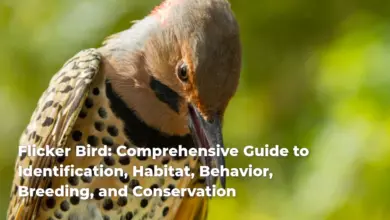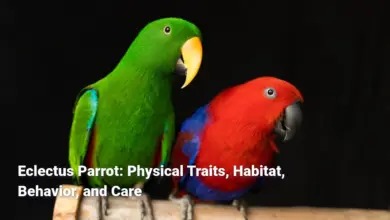Bullfinch: An Insight into Characteristics, Habitat, Behavior, Breeding, Conservation, and Cultural Significance
A Comprehensive Look at the Bullfinch: Characteristics, Habitat, Behavior, Breeding, Conservation, and Cultural Impact
Bullfinch: An Insight into the Species
The bullfinch, scientifically known as Pyrrhula pyrrhula, is a charming bird that captivates avian enthusiasts and casual observers alike with its striking appearance and melodious calls. Often recognized for its stunning plumage and sociable nature, the bullfinch inhabits a variety of environments, thriving in both rural and urban settings across Europe and parts of Asia. This article delves deep into the characteristics, habitat preferences, behavior, breeding patterns, conservation status, and cultural significance of the bullfinch, offering a thorough exploration of this fascinating bird.
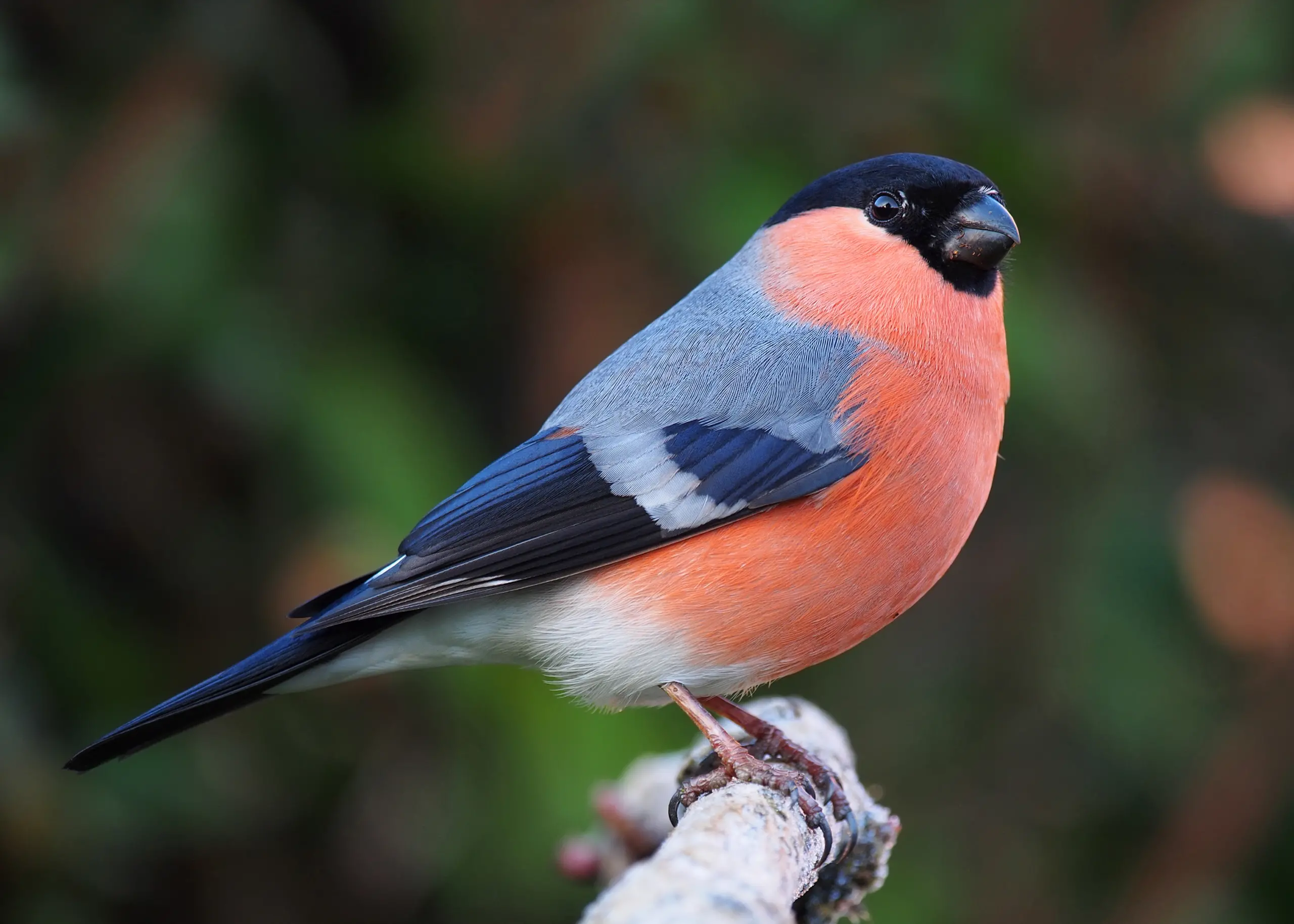
The bullfinch holds a significant place in avian biodiversity, recognized not only for its visual appeal but also for its unique ecological role. The species is characterized by its vibrant coloration, delightful vocalizations, and intricate social structures. Moreover, the bullfinch’s varied habits and adaptability make it an essential subject of study for ornithologists and nature lovers. In this comprehensive overview, we will explore what makes the bullfinch a remarkable species in the avian world.
Characteristics of Bullfinches
Bullfinches are enchanting birds that showcase a variety of traits that set them apart in the finch family. Known for their distinctive physical appearance, they embody a blend of strength and elegance, almost like nature’s own artwork painted in vivid hues. With robust bodies and enchanting calls, these birds provide an irresistible draw for onlookers.
- Sexual Dimorphism: One of the most striking characteristics of bullfinches is the sexual dimorphism between males and females. Adult male bullfinches exhibit an array of bright colors, including a rosy-red belly and chest complemented by stark black wings and a cap. In contrast, females possess a more understated beauty with their greyish-brown plumage. This stark difference in coloration serves not only as a means of attracting mates but also evokes emotional responses as people connect with the contrasting aesthetics of nature.
- Physical Features: Bullfinches possess short, stout bodies and thick bills, enabling them to crack seeds with ease. This bill is more than just a tool; it symbolizes their adaptability and resilience. The visual allure of their plumage, coupled with the practical design of their bills, represents the harmonious balance of form and function in the wild.
- Nesting Habits: These birds choose dense shrubbery and hedgerows for nesting, providing safety and cover while nurturing their young. The craftsmanship of their nests not only showcases their innate building abilities but also becomes a poignant reminder of the fragility of avian life, a metaphor for nurturing and protection in the wild.
- Feeding Behavior: Bullfinches primarily feed on seeds, buds, and fruits. Their specialized diets highlight their role in ecosystem dynamics, particularly in seed dispersal and controlling plant populations. This behavior reinforces the interconnectedness of all living things, serving as a lesson in sustainability and harmony within the natural world.
In summary, the bullfinch’s characteristics are not merely physical but resonate with deeper meanings and emotional connections. Their beauty, adaptability, and behaviors weave a rich tapestry that highlights the significance of biodiversity in our environment.
Physical Appearance
Bullfinches are distinguished by their striking coloration and compact physique, which lend to their fantasy-like representation in various artistic depictions. The adult male bullfinch stands out with a vivid rosy-red chest and underparts that seem to glow against the backdrop of nature, making it a visual delight for birdwatchers and photographers alike.
- Size and Structure: Generally, these birds measure between 6 to 8 inches in length, with a robust, compact build that contributes to their stockiness. Their stout bodies are complemented by short tails, providing agility as they move through dense shrubbery and trees. This physicality reflects their adaptability to various habitats, from woodlands to gardens.
- Males vs. Females: The radiant plumage of the male bullfinch, combined with its black cap, distinguishes it vividly from the female, whose more muted tones of greyish-brown and faint pink serve as camouflage in the wild. This sexual dimorphism not only plays a role in mate attraction but also subtly emphasizes the delicate balance between beauty and survival.
- Juvenile Morphology: Juvenile bullfinches present a fascinating study in contrast; they lack the vibrancy of adult males and the subdued beauty of adult females, appearing drab and streaked. As they mature, their colors transform, mimicking the journey of growth and development that resonates with human experiences of change and maturation.
- Unique Bill Structure: The bullfinch’s thick, conical bill is perfectly designed for its diet, allowing it to crack open hard-shelled seeds and buds. This physical adaptation symbolizes the evolutionary strategies birds adopt to thrive in their environments, showcasing the ingenuity that nature embodies.
Through a more profound appreciation of their physical appearance, one can observe how bullfinches personify the complexities of beauty, adaptation, and survival. Their stunning imagery invites us to pause and reflect on the natural world and its invaluable offerings.
Color Variations
The allure of bullfinches is undeniably enhanced by their striking color variations, which capture the beauty of nature’s palette. Each hue tells a story, evoking emotions and connecting observers to the natural world.
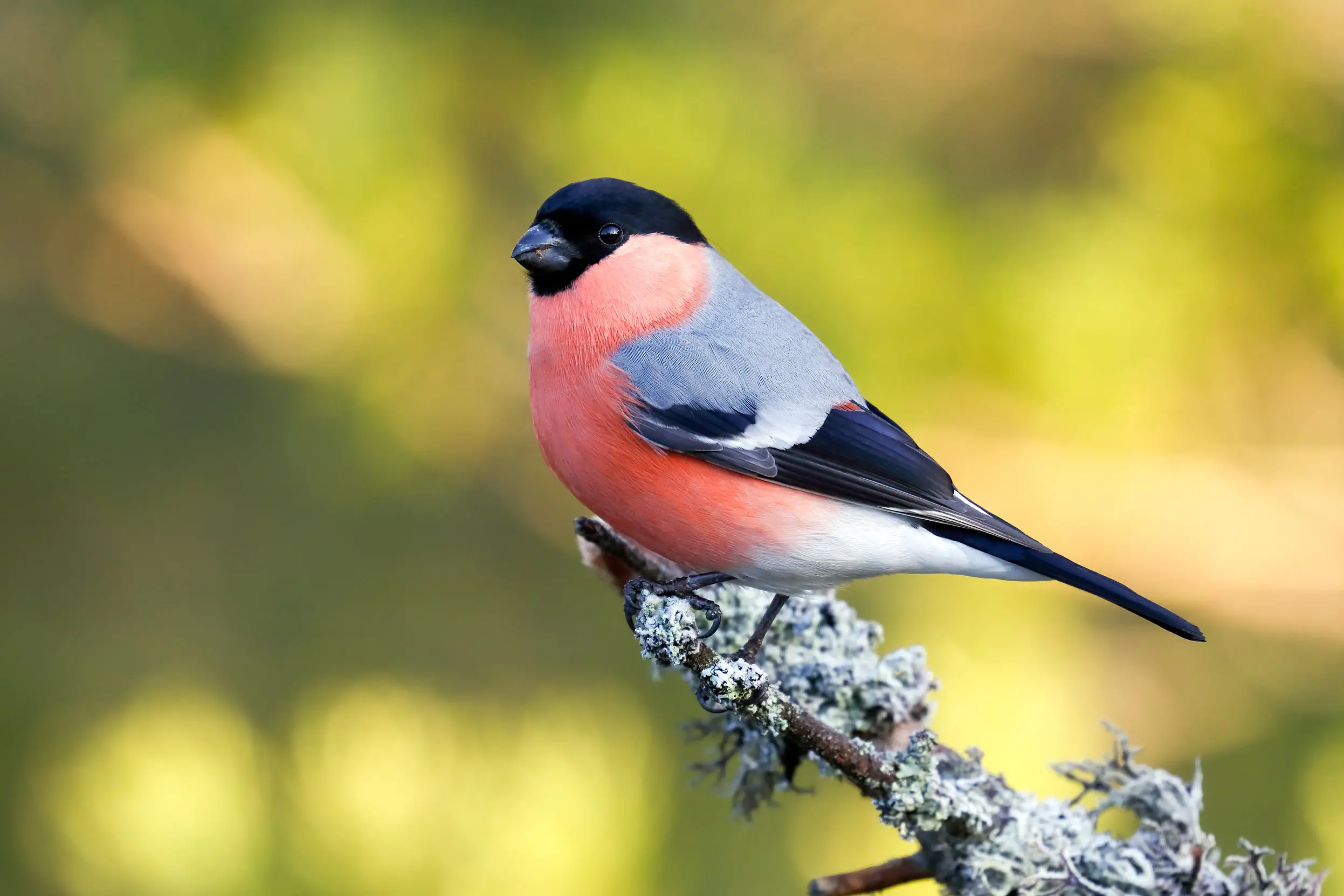
- Adult Male Vibrance: The adult male bullfinch is perhaps the most visually captivating, dazzling observers with its bright rosy-red underparts and contrasting black cap. This vivid coloration serves as a beacon, highlighting the importance of visual signaling in mate selection and social interactions. Just as a painter captures emotion on canvas through color, the male bullfinch utilizes its palette to communicate vitality and health.
- Females as Subtle Beauties: The female bullfinch showcases the beauty of subtlety, sporting muted greyish-brown feathers adorned with delicate hints of pink. This muted plumage allows for camouflage among foliage, providing safety from predators. Their understated hues can be likened to an elegant piece of jewelry, where the brilliance lies not in ostentation but in refinement and tact.
- Juvenile Colors: Juvenile bullfinches emerge with an even more subdued appearance, lacking the brightness of their adult counterparts. Their dull coloring serves a pragmatic function, hiding them from potential threats while they learn to navigate the world. This phase mirrors the transitional struggles of youth in nature, emphasizing vulnerability and the gradual attainment of strength.
- Seasonal Color Changes: The changing seasons can influence the appearance of bullfinches as they adapt their feeding habits and behaviors. In winter, their need for protection encourages them to seek out denser vegetation, where their colors blend into surroundings. This seasonal adaptability reflects the broader patterns of survival exhibited by wildlife, enhancing our reverence for the resilient spirit of nature.
These color variations across the life stages of the bullfinch weave a narrative around the complexities of survival and adaptation in the wild. Such observations serve as a reminder of the intrinsic link between nature’s aesthetics and the functionality these traits serve in the lives of these vibrant birds.
Size and Weight
Bullfinches may vary in size and weight, showcasing an intriguing aspect of their biology essential for understanding their behavior and ecological roles.
- Length and Wingspan: Adult bullfinches typically measure between 6 to 8 inches (15-20 cm) in length, a size that is both manageable for flight and compact for camouflage within dense foliage. Their wingspan reaches an average of about 10 inches (25 cm), allowing them to navigate through trees efficiently while foraging for food.
- Weight Variability: In terms of weight, adult bullfinches generally range from 0.74 to 0.95 ounces (21 to 27 grams). This weight range allows them to maintain agility while being robust enough to crack open seeds and buds a testament to their evolutionary adaptations.
- Sexual Dimorphism in Size: While both sexes are similar in size, males tend to exhibit slightly heavier weights on average compared to females. This subtle distinction highlights the delicate balance of power and resource allocation in the avian realm, where male animals often possess greater physicality to attract mates and secure territory.
- Juvenile Size: Juvenile bullfinches are noticeably smaller and lighter than adults. This phase of growth emphasizes the transition into maturity, where increased size correlates with greater feeding independence and survival skills. It captures the essence of growth a journey from vulnerability to strength.
Understanding the size and weight dynamics of bullfinches allows us to appreciate their role within ecosystems and how these characteristics align with their behavioral strategies and feeding habits.
Habitat of Bullfinches
Bullfinches thrive in diverse habitats that accommodate their feeding, nesting, and social needs.
- Wooded Areas: Bullfinches primarily inhabit deciduous and mixed woodlands where ample food sources and cover are available. These environments offer a rich blend of trees and shrubbery, creating safe foraging areas. Key features of such habitats are their vertical stratification, which allows the birds to forage at different levels, mirroring the hierarchical structure of life in a forest.
- Hedgerows: The frequency of hedgerows plays a significant role in their habitat selection. Bullfinches are often found near these structures, which provide essential food sources as well as protection from predators and harsh weather. Hedgerows serve as a bridge between agricultural land and natural ecosystems, symbolizing the delicate coexistence of human activity and wildlife.
- Urban Gardens: Increasingly, bullfinches have adapted to urban settings, flourishing in gardens and parks. These areas with dense cover and a variety of food provide solace amidst the bustling city, offering a narrative of adaptability that resonates deeply with urban dwellers seeking harmony with nature.
- Rural Environments: Bullfinches can also thrive in rural farmland, often found foraging near crops and gardens. Agricultural settings with adjacent hedges and wooded patches support their diverse diet while enabling them to maintain a connection between cultivated land and wild ecosystems.
By understanding the habitat preferences of bullfinches, we witness how these birds navigate and adapt to various environments. The symbolism of their habitat reflects broader themes of coexistence, demonstrating how human landscapes can integrate with wildlife, promoting biodiversity and conservation.
Preferred Environments
Bullfinches exhibit distinct preferences when it comes to their environments, shaping their behaviors and social structures.
- Woodlands and Shrublands: Bullfinches thrive in dense woodlands, particularly in areas where a mix of coniferous and broadleaf trees is present. These woods provide not only the shelter that bullfinches seek from predators but also an abundant source of food, such as seeds and tree buds.
- Hedgerows and Urban Parks: The importance of hedgerows cannot be overstated. Bullfinches frequent these areas at remarkable rates, with studies showing a 94-96% occurrence at nesting sites. Urban parks, with their carefully cultivated plants, serve as artificial hedgerows, attracting these birds to city environments where they can find food and nesting sites.
- Fruit Gardens and Orchards: In more extensively cultivated environments, bullfinches gravitate towards gardens and orchards during the breeding season, particularly favoring fruit trees. These areas not only provide sustenance but also ideal nesting sites for raising their young, reinforcing their connection to human landscapes.
- Farmland Edges: Bullfinches are often found on the edges of farmland, particularly where shrubs and hedges provide cover. This habitat choice illustrates their adaptability, utilizing agricultural settings while contributing to pest control by feeding on various seed types.
Through these observations, we see how bullfinches create a tapestry of preferred environments. Their adaptability and versatility are archetypes of resilience that highlight the interdependence between wildlife and human ecosystems.
Geographic Distribution
The geographic distribution of the Eurasian bullfinch (Pyrrhula pyrrhula) encompasses a vast range that includes various European countries and parts of Asia, marking its significance in avian biodiversity.
- Native Range: Bullfinches predominantly inhabit temperate regions, which include countries such as the United Kingdom, Germany, Sweden, and parts of Eastern Europe. Their preference for mixed woodlands aligns with geographic areas rich in biodiversity.
- Migratory Patterns: Generally, bullfinches are resident birds; however, individuals from the northern populations often migrate southwards in winter to avoid harsh weather conditions, demonstrating their adaptability to changing climates.
- Urban Presence: Interestingly, bullfinches have established viable populations in urban areas, a testament to their resilience. This adaptability to human-altered landscapes reflects broader trends in wildlife ecology, where species increasingly utilize urban spaces for survival.
- Habitat Diversity: The diversity of habitats across their range from rural gardens to dense forests enables them to thrive in varied ecological niches. This adaptability underscores the importance of maintaining green spaces to support local wildlife populations.
Overall, the geographic distribution of bullfinches offers vital insights into their ecological roles and exemplifies their adaptability amid environmental changes. Understanding their distribution patterns illuminates the rich interconnectivity within ecosystems.
Seasonal Movements
Seasonal movements of the Eurasian bullfinch highlight the implications of environmental changes on their behavior and feeding patterns.
- Breeding Season: Bullfinches typically breed from late spring to early summer, where warmer weather signals the availability of resources for raising young. Their presence in gardens and orchards during this time reflects their adaptability to human-influenced landscapes.
- Winter Foraging: During the winter months, bullfinches often move in search of food, typically congregating in small flocks to forage. They are known to visit fruit trees and gardens, gathering sustenance to survive the colder months. This behavior emphasizes the importance of seasonal food availability in shaping their habitats.
- Migration Behavior: Although they predominantly remain resident in their habitats, some northern bullfinches migrate southward in winter. This migration is not typically extensive but shows their need to seek favorable environments for sustenance and shelter.
- Behavioral Adaptations: Changes in vegetation influenced by seasonal patterns prompt changes in feeding habits and nesting approaches. Bullfinches strategically adjust their diets depending on seasonal availability, which underscores their ecological resilience and resourcefulness.
In sum, the seasonal movements of bullfinches underscore their adaptive nature and reflect the interdependent relationships within ecosystems. Not merely a seasonal occurrence, these movements tell a story of survival, marking the intricate dance between wildlife and their environments.
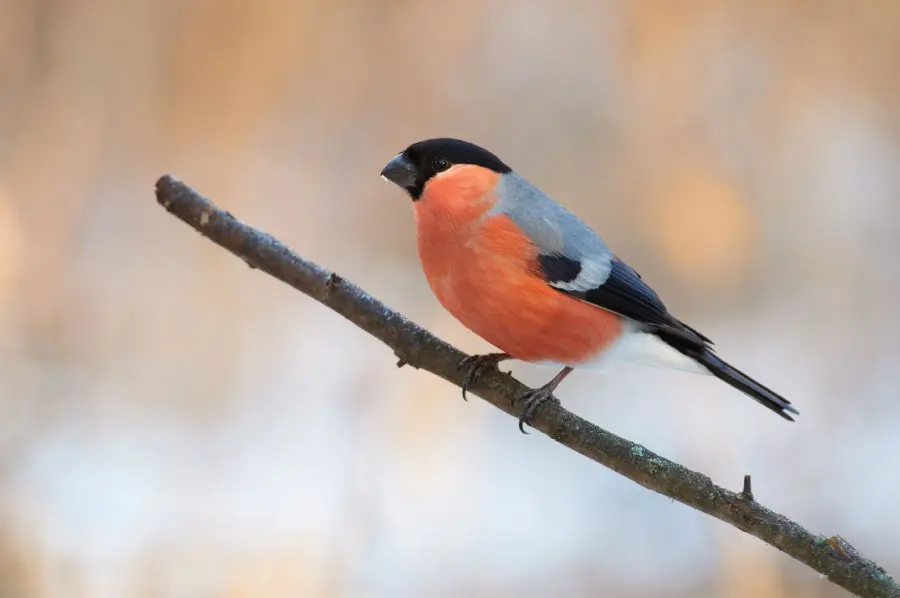
Behavior of Bullfinches
Bullfinches exhibit unique behaviors that reflect their social structures and lifestyle, enriching the narrative of avian life.
- Social Structure: Bullfinches are generally solitary outside the breeding season, forming monogamous pairs during the breeding season. This behavior underscores the intimate bond that forms between partners and the commitment to raise young together. Their courtship rituals and mutual care during the nesting period illustrate the emotional investment within the species.
- Territorial Displays: Males are known for their territorial displays during mating season, often singing and performing visual displays to attract mates. Their vocalizations, which can be described as soft and melancholic whistles, facilitate communication and bonding between pairs.
- Feeding Behavior: Bullfinches typically forage alone or in pairs, illustrating a comfortable independence coupled with the need for partnership during breeding. They exhibit shy and unobtrusive tendencies, rarely forming large flocks, which allows them to adapt to varying food sources while minimizing competition.
- Winter Behavior: In winter, bullfinches may congregate in larger groups to forage, indicating their adaptability in social behavior. This seasonal shift provides a fascinating glimpse into their strategies for resource gathering and survival.
In summary, the behavior of bullfinches weaves a rich tapestry of social interactions and adaptability. Their tendency toward monogamy, paired with solitary foraging methods, reflects a nuanced understanding of relationships in nature, highlighting the intricate balance of community and individuality within this species.
Social Structure
The social structure of bullfinches reveals their intriguing behavioral patterns and relationships within communities.
- Monogamous Pair-Bonding: Bullfinches are typically monogamous, forming long-term pair bonds that can last for multiple breeding seasons. This enduring connection symbolizes solidarity and commitment, encapsulating the essence of their partnership through shared responsibilities in nurturing young.
- Courtship Displays: During courtship, males engage in elaborate displays to attract females. These behaviors include singing, puffing out chests, and showcasing vibrant plumage. Such displays not only signal readiness to mate but also reflect the artistry of nature’s evolutionary adaptations in fostering reproductive success.
- Territoriality: While bullfinches do not form large flocks outside the breeding season, they display territoriality during this time, allowing them to establish and protect their nesting sites. The male’s soft whistles serve as both a warning and a beacon for attracting mates, furthering their social dynamics.
- Nest Cooperation: Both partners participate in nest building a cooperative endeavor highlighting the interdependence between individuals. This shared responsibility strengthens the bond between mates and demonstrates a collective investment in the future of their offspring.
Thus, the social structure of bullfinches captures a balance of individuality and cooperation. Their monogamous tendencies and territorial behaviors entwine, portraying a rich narrative of relationships and responsibilities in the avian world.
Feeding Habits
The feeding habits of bullfinches are multifaceted, reflecting their adaptability, preferences, and ecological roles within their habitats.
- Diet Composition: Bullfinches are primarily herbivorous, with a diet mainly consisting of seeds, buds, fruits, and leaves. They have a marked preference for tree buds, especially during spring, underscoring their ecological role in regulating plant populations and contributing to seed dispersal. Their diet mirrors the diversity of their habitats, allowing them to thrive across environments.
- Feeding Behavior: Typically, bullfinches feed alone or in pairs, displaying a cautious approach to foraging. They often perch on branches, utilizing their robust bills to crack seeds and access food from challenging materials. This behavior not only speaks to their physical adaptations but also emphasizes their resilience in searching for resources.
- Ground Feeding: In winter, when food sources become scarce, bullfinches may forage on the ground, demonstrating their ability to adapt to variable feeding conditions. This behavior highlights their versatility and resourcefulness as they seek alternative food sources to survive harsh climates.
- Feeding Preferences: Bullfinches are particularly fond of certain plants, including the buds of fruit trees, which can sometimes lead them to be classified as pests in orchards. Their selective feeding habits emphasize the balance of coexistence between wildlife and agriculture, highlighting the importance of understanding and managing interactions for mutual benefit.
Overall, the feeding habits of bullfinches encapsulate their role in promoting biodiversity, aiding in seed dispersal, and exemplifying adaptability in survival strategies. The intricate details of their diet and feeding methods narrate the complexities of their interactions with the ecosystem.
Vocalizations and Communication
The vocalizations and communication of bullfinches play a crucial role in their social interactions and territorial marking.
- Vocal Abilities: Bullfinches are renowned for their diverse vocal repertoire, including various calls and songs. Their melodic notes often elicit emotional responses from listeners, painting a soundscape that reflects the beauty of the natural world. The ability to mimic human melodies makes them particularly endearing to enthusiasts and offers insight into their cognitive capabilities.
- Territorial Calls: During the breeding season, males utilize vocalizations to establish territory and attract mates. Their soft, low whistles serve as simple yet effective warnings to potential rivals, reinforcing their presence and commitment to nesting areas. This vocal communication exemplifies the nuances of avian behavior, where sound becomes a tool for survival and reproduction.
- Pair Communication: Within monogamous pairs, vocalizations strengthen bonds through shared communication. Soft whistles and calls facilitate interaction between mates, ensuring coordination in feeding and nesting activities. This emphasizes the importance of communication in maintaining relationships, akin to the way humans utilize language for connection.
- Social Dynamics: Bullfinches adapt their vocal behaviors to seasonal changes, with variations occurring during foraging and nesting periods. In winter, their calls become softer as they congregate in small groups for foraging, showcasing their ability to respond to environmental cues while maintaining social bonds.
In summary, vocalizations in bullfinches are essential aspects of their behavior, weaving through social interactions, territory establishment, and mate attraction. The artistry of their communication reflects the deeper connections that exist in nature, offering a poignant reminder of the complexity of life in the wild.
Breeding and Reproduction
Breeding and reproduction processes of bullfinches are intricate and reflect their social structures and environmental adaptability.
- Breeding Season: Bullfinches typically engage in breeding from late spring to early summer, with courtship rituals heightening during this period. Males showcase their vibrancy through song and display, vying for female attention, thereby reinforcing the interdependence between color, sound, and reproductive success.
- Nesting Choices: The female bullfinch generally selects nesting sites, favoring dense foliage and shrubs, which provide protection and security. This choice encapsulates the bird’s instinctual focus on nurturing, emphasizing the safety of young ones as a fundamental mantra in the animal kingdom.
- Egg Laying: Clutch sizes typically range from 4 to 6 eggs, characterized by delicate blue colorings with mottling. This stage symbolizes hope and fertility, mirroring the universal themes of life and renewal inherent in nature.
- Parental Involvement: Both male and female bullfinches partake in nurturing their young, from incubating the eggs to feeding the chicks after hatching. This cooperative breeding strategy speaks to the emotional connections formed between breeding pairs, underlining the deeply rooted instinct for survival that exists across species.
Ultimately, the breeding and reproduction patterns of bullfinches reflect a multifaceted understanding of nature’s balance reinforcing the themes of connection, nurturing, and resilience that define the avian experience.
Nesting Habits
The nesting habits of bullfinches demonstrate their adaptability and thoughtful behaviors in parenting.
- Nest Construction: Female bullfinches are primarily responsible for nest building, utilizing twigs, grass, and moss to create a safe haven for their young. This dedication to nest construction highlights their instinctual drive towards ensuring security and comfort within the unpredictable dynamics of nature.
- Nesting Locations: The choice of nesting sites is crucial; bullfinches prefer places such as dense bushes, hedgerows, and trees that provide protective cover from predators. The positioning of their nests typically around 4 to 7 feet above the ground serves as a strategic advantage against curious threats.
- Material Utilization: The materials selected for nesting demonstrate thoughtfulness, as softer lining materials like lichen and animal hair provide insulation and comfort. Such behaviors echo the intricate survival strategies that form the foundation of avian ecology, revealing the intelligence and resourcefulness of these remarkable birds.
- Environmental Interaction: Nesting habits are not solely influenced by bird behaviors but also by environmental changes. Bulging demand for nests extends into the shrubbery-rich ecosystems favored by bullfinches, emphasizing the interconnectedness of flora and fauna in their habitats.
In essence, the nesting habits of bullfinches exemplify the beauty of caregiving in nature. These practices capture the essence of adaptation, survival, and the intricate symphony of life that resonates within the ecosystems they inhabit.
Egg Laying and Incubation
Egg laying and incubation are pivotal stages in the reproductive cycle of bullfinches, reflecting their nurturing behaviors and environmental awareness.
- Clutch Size and Color: Bullfinch females generally lay between 4 to 6 eggs, characterized by delicate smooth surfaces and a pale blue hue adorned with subtle brown mottling. The beauty of the eggs symbolizes the fragility of life, creating a poignant connection to the nurturing spirit inherent in nature.
- Incubation Period: The incubation period lasts approximately 12 to 14 days, during which the female takes charge of keeping the eggs warm and protected. The male plays a crucial role during this phase by bringing food to the female, demonstrating their cooperative approach and the importance of partnership in their lineage.
- Temperature Regulation: The ability of female bullfinches to maintain the right temperature for their eggs is crucial for chick development. This meticulous attention to detail highlights their adaptive capacities and instinctive behaviors, showcasing the balance between vulnerability and nurture.
- Hatching Dynamics: Upon hatching, the chicks rely heavily on parental guidance for their survival. Bullfinches’ commitment to providing nourishment underscores their dedication to parental care, facilitating a powerful narrative of resilience and the continuation of avian life.
In summation, the egg-laying and incubation processes in bullfinches resonate with broader themes of hope, commitment, and the fragile beauty of life’s cycle. These stages capture the delicate interplay of care and natural instinct, vital for the perpetuation of their species.
Parental Care
Parental care in bullfinches encapsulates deep emotional connections, cooperative behaviors, and dedication to offspring survival.
- Shared Responsibilities: Both male and female bullfinches actively participate in raising their young, beginning with the incubation period. Males help feed the female during incubation, while both parents care for the chicks once they hatch, reinforcing their bond through shared responsibilities.
- Feeding Practices: When the chicks emerge, they require a varied diet consisting of insects and seeds to promote healthy growth. Parents engage in continuous foraging, fostering skills and independence in their youth while ensuring adequate nourishment is provided.
- Guardianship: The male often takes on the role of protector, safeguarding the nest from potential threats while the female tends to the hatchlings. This role emphasizes the traditional understanding of parenting dynamics in the avian world, showcasing avian resilience and the need for cooperative vigilance.
- Raising Multiple Broods: Given optimal conditions, bullfinches can successfully raise two to three broods in a single breeding season. This adaptability signifies their understanding of environmental cues and the needs of their offspring, highlighting the balance of population maintenance against ecological challenges.
The parental care behaviors observed in bullfinches illuminate the profound emotional connections that exist within the species. Dedicated nurturing and cooperative practices reflect broader themes of love, commitment, and resilience that resonate across the animal kingdom.
Conservation Status
The conservation status of the bullfinch highlights the challenges and successes of populations confronted with various threats.
- Population Dynamics: The Eurasian bullfinch (Pyrrhula pyrrhula) has experienced fluctuations in its populations, with factors such as habitat degradation and changing agricultural practices influencing numbers. In the UK, their population has dwindled by approximately 40% since the 1960s, prompting conservationists to focus on proactive measures.
- Conservation Categories: The bullfinch is classified as “Amber” under the Birds of Conservation Concern, signaling a need for continual monitoring and habitat management. This classification serves as an important call to action, emphasizing the need for public awareness and engagement in conservation efforts.
- Endangered Variants: While certain populations have faced challenges, the Azores bullfinch (Pyrrhula murina) has been classified as “vulnerable” due to its limited geographical range and population decline. Efforts to protect this subspecies reflect the interdependence of conservation actions between ecosystems and community involvement.
- Restoration Initiatives: Ongoing conservation programs target habitat restoration and invasive species control, highlighting successful outcomes of collaborative efforts. Examples include local habitat restoration projects aimed at revitalizing native vegetation and protecting the Azores bullfinch populations. This ensures a viable future for the species while emphasizing the importance of public engagement in conservation.
The conservation status of both Eurasian and Azores bullfinches serves as a crucial example of the interconnectedness between species and their environments. Effective conservation efforts signify hope, illustrating the impact of dedicated initiatives and community involvement in safeguarding biodiversity.
Threats to Population
While bullfinches show resilience, they face numerous threats impacting their populations and long-term survival.
- Habitat Loss: One of the primary threats to bullfinch populations is habitat degradation caused by urban development, agricultural expansion, and deforestation. The loss of hedgerows and woodlands disrupts nesting sites and food availability, significantly impacting breeding success.
- Invasive Species: The introduction of non-native species poses a major risk to bullfinches, particularly in areas like the Azores. Invasive mammals and plants can outcompete native species for resources, further reducing available habitat and nesting opportunities.
- Human Disturbance: Increased human activity around nesting areas, including hiking and agriculture, can lead to disturbances that affect reproductive success. Such interruptions may discourage breeding behaviors or expose young to predation, resulting in an increased risk of nest failure.
- Climate Change: Climate change poses long-term risks through potential shifts in habitat availability, feeding patterns, and overall environmental conditions. Such changes underscore the urgency for conservation planning and adaptive management approaches that can account for future environmental shifts.
Recognizing the threats faced by bullfinches illuminates the need for proactive conservation measures. Understanding these risks not only helps protect individual species but also fosters awareness of broader ecological challenges and the importance of maintaining biodiversity.
Conservation Efforts
Ongoing conservation efforts highlight both successes and challenges in maintaining bullfinch populations and habitats.
- Active Research: Conservation organizations and researchers continue to monitor bullfinch populations, assessing population dynamics and defining effective management strategies. This ongoing research highlights the importance of adaptive management in responding to environmental changes.
- Habitat Restoration Projects: Initiatives aimed at restoring native habitats have gained momentum in multiple regions, particularly for the Azores bullfinch, with substantial efforts devoted to removing invasive species and planting native vegetation. Collaborative efforts have led to the restoration of habitats essential for the bird’s survival.
- Community Education: Conservation education programs engage local communities in understanding the significance of bullfinches and their ecosystems. Awareness campaigns encourage people to participate in conservation initiatives, highlighting the role of public involvement in safeguarding wildlife.
- Legislation and Protection: Conservation efforts are supported by legislation aimed at protecting habitats and threatened species. Policies and guidelines reinforce commitments to preserving wildlife corridors and ensuring sustainable land-use practices, demonstrating the collaborative efforts between governmental and non-governmental organizations.
Collectively, these conservation efforts exemplify the broader theme of collaboration and commitment to protecting biodiversity. As communities and conservationists work together, the message of stewardship becomes clear: we hold the power to conserve and restore what we treasure in nature.
Importance in Ecosystem
Bullfinches play a vital role in maintaining ecological balance and biodiversity within their habitats.
- Seed Dispersal: By feeding on seeds and buds, bullfinches contribute significantly to seed dispersal processes. This role enhances forest regeneration and promotes plant diversity, supporting the overall health and resilience of ecosystems.
- Niche Regulation: The selective feeding habits of bullfinches influence plant populations, preventing certain species from becoming overly dominant. By regulating foliage density and diversity, they maintain the delicate balance that fosters rich, diverse wildlife habitats.
- Indicator Species: Bullfinches serve as indicators of ecosystem health. Changes in their populations can reveal broader environmental issues, such as habitat degradation or food availability, emphasizing the importance of monitoring their status to gauge ecological shifts.
- Cultural Significance: Beyond ecological contributions, bullfinches hold cultural value, inspiring art, folklore, and literature. Their symbolism in various cultures reflects humanity’s connection to nature, reminding us of the importance of preserving relationships with the environment.
In summary, the ecological importance of bullfinches encompasses not only their functional contributions within ecosystems but also their role in connecting human culture to the natural world. Recognizing and protecting these connections is vital for the future of biodiversity.
Bullfinches in Culture and Literature
The bullfinch finds itself gracing the pages of literature and cultural narratives, symbolizing various human qualities and sentiments throughout history.
- Symbolism of Resilience: In many cultures, the bullfinch embodies resilience and adaptation. Its ability to thrive in varied environments serves as a metaphor for overcoming adversity and finding strength amid challenges, resonating with the human spirit.
- Literature and Poetry: Bullfinches have often been referenced in poetry, where their melodious songs and vibrant colors inspire themes of beauty, love, and fragility. Poets utilize the imagery of bullfinches to evoke emotional landscapes, drawing parallels between the natural world and human experiences.
- Cultural Myths: In various folklore and mythologies, bullfinches have been celebrated for their perceived abilities to bring good fortune and happiness. Their songs are often associated with positive attributes, creating a deeper connection between humans and nature.
- Artistic Representation: The bullfinch’s striking plumage has made it a popular subject in art, symbolizing nature’s beauty and complexity. Artists have captured the essence of these birds, reminding viewers of the intricate balance within ecosystems and the importance of preserving biodiversity.
Overall, the cultural representation of bullfinches emphasizes the connections between humanity and nature. Their significance in literature, art, and mythology enriches our understanding of the world and highlights the importance of observing and preserving the intricate relationships that exist in our environment.
Symbolism and Representation
In cultural contexts, the bullfinch serves as a poignant symbol reflecting various human emotions, experiences, and values.
- Beauty and Elegance: The visually stunning plumage of bullfinches makes them powerful symbols of beauty and grace in nature. Their vibrant colors and gentle movements inspire admiration and reverence, reinforcing the idea that beauty exists not only for the sake of aesthetics but also as an integral part of life.
- Hope and Renewal: In many traditions, bullfinches symbolize hope and renewal due to their return in spring after winter’s gloom. This cyclical nature resonates with the human experience of overcoming challenges and the promise of new beginnings, making bullfinches powerful representations of optimism.
- Fertility and Abundance: Particularly in Native American cultures, the bullfinch symbolizes fertility and abundance, reflecting its instinctual behaviors that mirror human endeavors in nurturing life. This connection reveals the threads that link nature and humanity’s understanding of sustenance and growth.
- Balance and Harmony: In the context of folklore, the bullfinch embodies the balance between the physical and spiritual realms. Their cheerful songs resonate with themes of harmony, reminding individuals to seek peace and balance in their lives.
By understanding the rich symbolism associated with bullfinches, individuals can reconnect with nature’s narrative, reflecting on the broader meanings that this bird encapsulates.
Mentions in Poetry and Prose
Bullfinches have captivated poets and authors alike, appearing in various literary works as symbols of beauty, grace, and transience.
- Poetic Imagery: The gentle chirping of bullfinches serves as an exquisite metaphor for the fleeting beauty of life. Poets have often employed this imagery to evoke sentiments of love, nature, and the ephemeral qualities of existence. The way they traverse through beautiful landscapes parallels human experiences and emotions, providing depth in prose.
- Symbol of Connection: Bullfinches are frequently referenced to symbolize profound connections with nature, representing a bridge between the human experience and the natural world. Authors tap into this symbolism to invite readers to contemplate their place in the ecosystem and the shared bond with all living beings.
- In Literary Contexts: Renowned poets have included bullfinches in their works to embody human emotions and conditions. Their songs reflect unresolved melancholy, nostalgia, and longing, resonating through metaphors that draw from the natural world.
- Cultural Reflections: The presence of bullfinches in literature often reflects cultural ideas surrounding nature. By observing and documenting these relationships in prose, authors foster a dialogue that encourages a deeper understanding of humanity’s interconnectedness with the environment.
Through these literary mentions, bullfinches serve as memorable symbols that enrich storytelling. They reflect the profound connections between life’s experiences and the rhythms of nature, transforming readers’ understanding of their place in the world.
Folklore and Myths
Bullfinches hold a unique position in folklore and myth, often embodying traits that resonate deeply with human emotions, beliefs, and values.
- Celtic Beliefs: In Celtic folklore, bullfinches are viewed as spirits that transport souls to the afterlife. This belief emphasizes the notion of interconnectedness between life and death, illustrating the delicate balance of existence and adding a layer of depth to the bird’s symbolism.
- Native American Mythology: Among Native American cultures, bullfinches are associated with fertility and abundance. They are revered for their ability to gather food, representing the importance of preparation and sustenance in human life, forming analogies between humans and nature’s cyclical bounty.
- Resilience in Myths: Many cultures ascribe qualities of resilience to the bullfinch, viewing it as a symbol of overcoming adversity. The bird’s habits serve as a representation of strength, imparting wisdom about the necessity of adaptability in the face of life’s challenges.
- Good Luck Charms: Folklore often regards bullfinches as bringers of good fortune. Stories surrounding their presence frequently emphasize their role in ensuring happiness and peace within households, fostering a sense of harmony aligned with human desires for prosperity and joy.
Through engaging in folklore and myths, bullfinches bridge human experiences and the enchantment of the natural world. These stories symbolize hope, resilience, and interconnectedness, reinforcing the importance of preserving these connections with the environment.
Comparison with Other Finches
When comparing the Eurasian bullfinch (Pyrrhula pyrrhula) with other finches, especially the chaffinch (Fringilla coelebs), distinct similarities and differences emerge.
- Physical Characteristics: The male bullfinch is notable for its striking pink-red breast and black cap, while male chaffinches exhibit a more vibrant chestnut color with bluish-grey plumage on the head. The patterns and colors highlight sexual dimorphism, enhancing their individuality within the avian family.
- Dietary Preferences: Bullfinches predominantly feed on seeds, buds, and fruits, often targeting tree buds in spring. Chaffinches, on the other hand, consume seeds and insects, adjusting their diets seasonally. This distinction in preferences reflects their adaptive strategies for different ecological niches.
- Habitat Use: While both species can be found in gardens and woodlands, bullfinches often prefer denser, shrubbier habitats with plenty of coverage, whereas chaffinches tend to occupy a broader range of environments and are more frequently seen in open habitats, illustrating the nuances of ecological adaptability.
- Behavioral Patterns: Bullfinches are quieter and more secretive, often avoiding large social gatherings, whereas chaffinches are known for their melodious songs and can often be seen in flocks. This behavioral divergence emphasizes differences in social structure and habitat use in relation to their respective diets and ecological roles.
These comparisons profoundly illustrate the diversity and intricacies of the finch family, highlighting not only physical and dietary differences but also the varied adaptations that enable these species to thrive in their respective environments.
Similar Species
Among finches, the Eurasian bullfinch shares its ecological space with several similar species, each possessing unique characteristics that contribute to biodiversity.
- Chaffinch (Fringilla coelebs): Known for its vibrant plumage and melodic song, the chaffinch is often seen in gardens and woodlands. While both species share similar habitats, the chaffinch tends to have a broader range and is more proactively social, contrasting with the more solitary bullfinch.
- Greenfinch (Chloris chloris): The greenfinch displays a lively green-yellow hue, with a diet that includes seeds and fruits. Though both may inhabit urban areas, the greenfinch’s propensity for social feeding flocks sets it apart from the bullfinch’s more solitary foraging behavior.
- Goldfinch (Carduelis carduelis): Recognized for its striking yellow plumage, the goldfinch is another resident of gardens and fields. While both the bullfinch and goldfinch are seed eaters, the goldfinch’s preference for thistle seeds and sociability highlight distinctive behavioral traits.
- Firecrest (Regulus ignicapillus): Though considerably smaller, the firecrest shares habitats with the bullfinch in woodlands and parks. Their feeding habits focus on catching insects, differing from the bullfinch’s herbivorous diet and showcasing variance within finch niches.
Exploring the relationships among these finch species underlines the complexity of ecological interactions and the various adaptations that enable them to thrive in shared environments.
Distinguishing Features
Bullfinches possess several distinguishing features that make them unique within the finch family, providing insights into their identification and ecological roles.
- Vibrant Coloration: The male bullfinch’s striking plumage, characterized by rosy-red underparts and a distinctive black cap and wings, stands out vividly against green foliage. This coloration serves as a vital identifier in the field, allowing birdwatchers to recognize them quickly.
- Robust Bill: The bullfinch’s thick, short bill is uniquely adapted for cracking open seeds and buds, showcasing evolutionary specialization. This feature differentiates them from other finches that may have slimmer bills suited for different feeding strategies.
- Behavioral Characteristics: Known for their cautious and solitary behavior, bullfinches are less likely to flock in large groups compared to other finch species. This behavior reflects their tendency to seek shelter in dense thickets and hedgerows, further highlighting their secretive nature.
- Distinct Vocalizations: Bullfinches possess a unique vocal style, comprising soft, low whistles that contrast with the often louder calls of other finches. Their melancholic songs convey a sense of tranquility and elicit emotional resonances.
Understanding these distinguishing features enhances our appreciation for bullfinches and illustrates the intricate relationships between the birds’ traits, behaviors, and habitats.
Ecological Roles
The ecological roles of bullfinches underscore their importance within ecosystems and highlight their contributions to biodiversity.
- Seed Dispersal: By feeding on various seeds and fruits, bullfinches play a crucial role in seed dispersal, promoting plant diversity and regeneration. Their movements aid in spreading seeds across different areas, contributing to the overall health of their habitats.
- Control of Plant Populations: Bullfinches impact plant communities by selectively feeding on buds and seedlings, effectively regulating the growth of certain species. This behavior helps maintain biodiversity and prevents the dominance of specific plant species, promoting ecosystem resilience.
- Indicators of Ecosystem Health: Bullfinches can be used as indicators of environmental changes. Fluctuations in their populations can signal shifts in habitat quality or food availability, highlighting the interconnectedness of wildlife and their environments.
- Cultural and Educational Role: As symbols of nature’s beauty and resilience, bullfinches inspire interest in biodiversity conservation. Their presence in gardens and parks fosters a connection between communities and wildlife, encouraging engagement in ecological stewardship.
In summary, the ecological roles of bullfinches are diverse, encompassing vital functions that contribute to ecosystem dynamics and biodiversity. Their presence enriches habitats while serving as reminders of the intrinsic link between species and the natural world.
Conclusion
Bullfinches, with their vibrant plumage, melodious songs, and unique behavioral traits, serve not only as captivating subjects of study but also as vital components of their ecosystems. Their adaptability to a range of environments, from dense woodlands to urban gardens, showcases their resilience in the face of ecological challenges. The intricate social structures and nurturing behaviors of bullfinches deepen our understanding of parenting in the avian world.
As we explore their significance within culture, literature, and conservation efforts, we are reminded of the importance of safeguarding these remarkable birds and their habitats. Bullfinches symbolize the beauty and complexity of nature, inspiring us to foster a compassionate relationship with the environment and recognize our own roles in preserving biodiversity for future generations. By embracing the stories and significance of bullfinches, we can cultivate a deeper connection to our natural world, championing conservation and stewardship in the face of ongoing ecological challenges.








